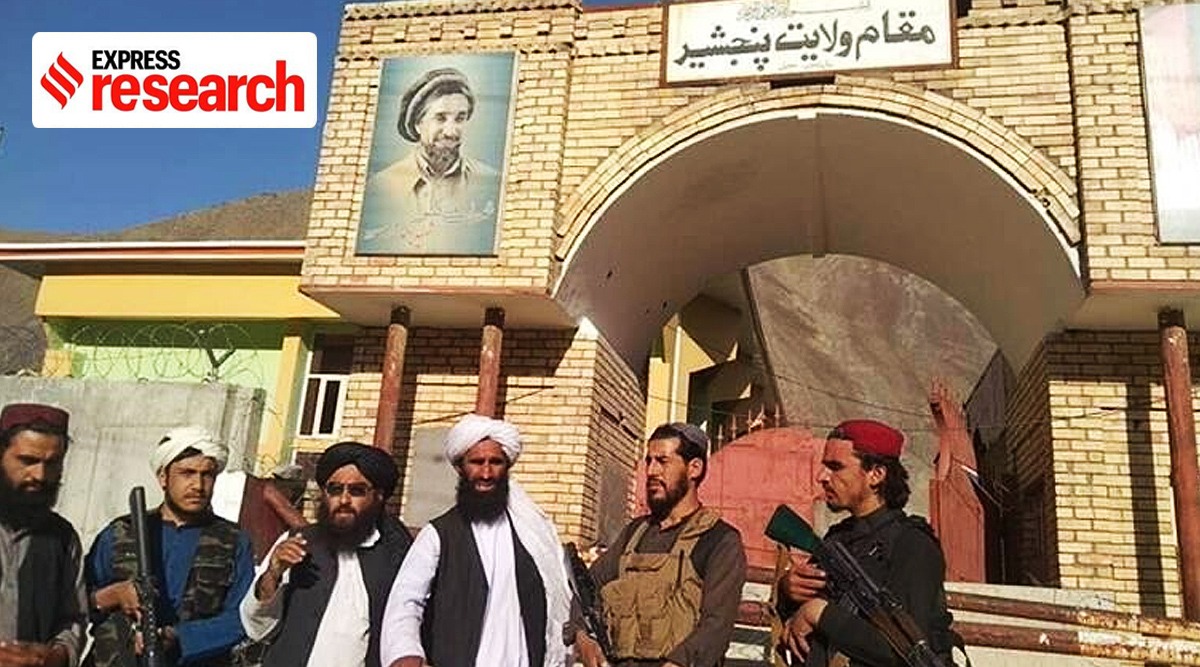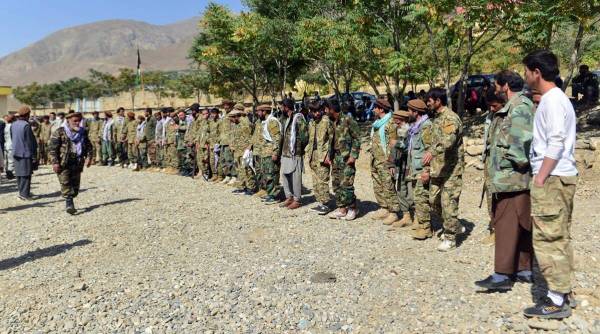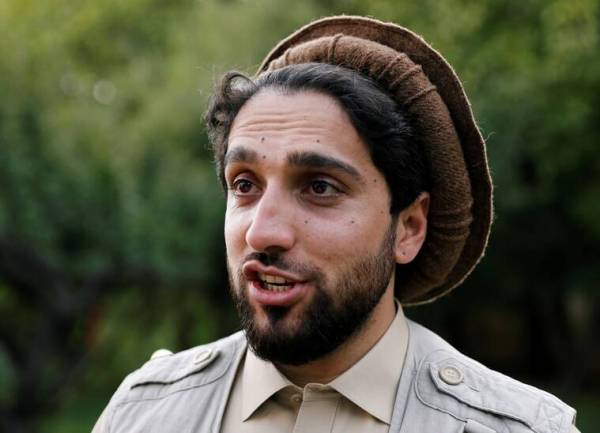Mira Patel

The Panjshir valley, a rugged groove cut into the Hindu Kush mountains, has a storied reputation of resisting invasion. There are two main points of entry into the valley, both of which require passing through unforgiving terrain and complicated topography. Its towns are spread across the valley floor, surrounded by the icy blue waters of the Panjshir river and the daunting bare-ribbed mountains that tower above. Blending into the gorgeous scenery, the streets of Panjshir are littered with decaying tanks and machinery, remnants of the Soviet era that stand as a stark reminder of the region’s violent past.
The valley is perhaps best known for its most famous son, Ahmad Shah Massoud, the Lion of Panjshir. A commanding Mujahideen fighter, Massoud successfully mobilised the people of the region to resist both occupation from the Soviets and later the Taliban. Massoud was so highly regarded as an opponent that forces loyal to Al Qaeda assassinated him days before the 9/11 attacks as a means of consolidating support with the Taliban. His legacy still looms over the valley however, and his son, Ahmad Massoud, has followed in his father’s footsteps to form the Northern Resistance Front (NRF), the latest iteration of the famed Northern Alliance that fought against the Taliban in the late 1990s.
However, unlike his father, Massoud was unable to defend Panjshir and on September 6, the Taliban took control of the valley, completing their occupation of all of Afghanistan’s 34 districts. Sources from the region indicate that the resistance is still alive and will continue to bear arms against the Taliban under the leadership of the younger Massoud and former Afghan Vice-President Amrullah Saleh. The success of their efforts to regain control of Panjshir will be dependent on a number of factors but given what we know so far, the prognosis is bleak.
History of resistance in Panjshir
Panjshir is home to the largest population of ethnic Tajiks living in Afghanistan which shapes the region’s political and cultural identity. Although they don’t have strong ties to Tajikistan, their value system is markedly different from the country’s dominant Pashtun population. The Taliban, a predominantly Pashtun organisation, has historically struggled to gain support in Panjshir despite recent attempts to include Tajiks within their ranks. Panjshir, due to its heavy supply of minerals, is also wealthier on average than the rest of Afghanistan and considers itself to be an almost autonomous region, detached from the rest of Afghan internal politics. As a result of its unique cultural makeup, the people of Panjshir have consistently resisted foreign invaders, which to them, includes both the Soviets and the Taliban.
During the Soviet-Afghan wars of the 1980s, the Soviets launched multiple assaults on Panjshir in an attempt to control the strategic valley that connects Kabul to the north of Afghanistan. Most notably, in 1984, the Soviets attempted to take the valley and assassinate Massoud, who had managed to unite a number of Afghans from different backgrounds under the banner of the Mujahideen, a feat uncommon in the famously tribalistic country. When 220 Soviet soldiers entered the valley, they came under heavy fire from above. Perched at the top of the valley, Massoud’s men took out the Soviet soldiers one by one, in a battle that better resembled a massacre. After suffering many casualties, the Soviets finally managed to take the valley but were unable to retain it due to the ongoing conflict with the Panjshiri people.
Between 1996 and 2001, Massoud formed the Northern Alliance from Panjshir and once again defended the valley, this time from the Taliban. Despite multiple attempts to drive the Alliance out of Panjshir, Massoud and his men held firm and the region was the only one in Afghanistan that wasn’t controlled by the Taliban. Under Massoud, the valley enjoyed a significantly better standard of living than the rest of Afghanistan including better provisions for women and greater tolerance for minorities. Formerly a part of Pawan province, Panjshir valley became the heart of the newly-created Panjshir province after Massoud’s death. Strategically as well as symbolically, the recent fall of the valley is a considerable blow to the resistance.
How did the Taliban capture Panjshir
 Militiamen loyal to Ahmad Massoud, son of the late Ahmad Shah Massoud, stand in formation during a training exercise, in Panjshir (AP Photo/Jalaluddin Sekandar)
Militiamen loyal to Ahmad Massoud, son of the late Ahmad Shah Massoud, stand in formation during a training exercise, in Panjshir (AP Photo/Jalaluddin Sekandar)Around August 17, remnants of the Afghan National Army began mobilising in the Panjshir Valley under the direction of Massoud. At the time, Saleh, who had declared himself the de facto President of Afghanistan, attempted to negotiate a peaceful end to the conflict but the NRF’s endeavours to seize crucial supply routes was seen as a betrayal by the Taliban who soon launched counter-offensives of their own.
On August 23, reports suggested that talks between representatives from Panjshir and the Taliban had failed, and that the latter was preparing to send hundreds of its forces to the region. Cut off from supply routes to Tajikistan, Massoud made a desperate plea to the international community, writing an op-ed in the Washington Post, asking for support against the Taliban. No help arrived however, and Massoud once again entered into talks with the group with both sides declaring a ceasefire on August 26. The Taliban went on to cut all internet and telecommunication services throughout Panjshir on August 29 which significantly hampered the NRF’s ability to communicate with supporters domestically and abroad.

Cut off from the outside world, on August 31, the valley was subjected to a violent offensive by Taliban forces who were allegedly aided by Al Qaeda operatives. By September 6, after heavy fighting that resulted in widespread casualties on both sides, the Taliban captured the governor’s office in Bazarak and laid claim to the entire Panjshir valley.
Panjshir after the Taliban conquest
There are conflicting accounts emerging from the Panjshir valley and given the lack of journalists and social media in the region, it is difficult to determine what the situation on the ground is. According to Taliban reports, both Massoud and Saleh have fled from Afghanistan to Tajikistan, with one Taliban spokesperson posting a picture of himself in Saleh’s house as proof of his disappearance. The Resistance has denied these claims and insists that both Saleh and Massoud are still in Afghanistan and are lying low for security reasons. On September 8, French journalist Bernard-Henri Lévy shared a photo of himself talking to Massoud in Panjshir, further bolstering the NRF claims.
There is also dispute over how much of the valley is controlled by the Taliban, with one NRF leader, Ali Nazary, claiming that while the Taliban had captured the main road running through the valley, 60 to 65 per cent of the region was still outside their grasp. Nazary has also accused the Taliban of targeting civilians, an assertion backed by a September 13 investigation by the BBC which found that the group had executed at least 20 civilians since entering the valley.
However, on September 11, journalists from Tasnim News Agency were allowed into Panjshir to interview civilians and members of the Taliban. They report that the group has captured all of Panjshir and that the situation there is relatively calm despite rumours of violence. Taliban spokesperson Zabiullah Majahid has also denied that the group had committed any human rights violations.
A source working for an independent news agency based in the region told indianexpress.com that the resistance has entered into a “new phase of guerrilla warfare” and maintains that the Panjshir valley is still very much contested, with the “mountains and sub-valleys all controlled by the NRF.” The source also claims that the Taliban “cut off internet and electricity, and blocked all food and medical supplies coming into Panjshir.” Moreover, the Taliban conducted “dozens of executions and tortures on a daily basis, forcing 80 per cent of the remaining population to flee to the mountains.”
According to the Panjshir Observer, there was a three-day window where the Taliban said civilians could leave but when they reached the checkpoint, only women and children were allowed to pass, with the men “rounded up and executed on suspicion of supporting the NRF.”
Current situation
Despite credible reports that suggest the NRF is still active, its ability to drive the Taliban out of the Panjshir valley is likely limited. The group suffers from a lack of internal leadership and more significantly, external support.
 Ahmad Massoud, son of the slain hero of the anti-Soviet resistance, Ahmad Shah Massoud, at his house in Bazarak, Panjshir province Afghanistan on September 5, 2019. (Reuters/File)
Ahmad Massoud, son of the slain hero of the anti-Soviet resistance, Ahmad Shah Massoud, at his house in Bazarak, Panjshir province Afghanistan on September 5, 2019. (Reuters/File)The NRF possesses no leaders that can significantly mobilise public support. Massoud, who bears a striking resemblance to his father, is young and has spent much of his life outside of Afghanistan. While he insists that it is in his DNA to never back down, much of his appeal comes from his relationship to Massoud Sr. and his own ability to recruit support is relatively limited.
Saleh, while certainly influential, was not particularly prominent politically before President Ashraf Ghani fled the country and is similarly limited in his popular appeal. Additionally, high-profile members of NRF have been killed during the conflict such as Fahim Dashti, the spokesperson of the group and a nephew of Dr. Abdullah along with General Abdul Wudod Zara, another senior member and nephew of Ahmad Massoud Sr.
Other prominent Afghan leaders like Dr. Abdullah Abdullah and former President Hamid Karzai have not joined the NRF and anti-Taliban leaders in northern Afghanistan like Atta Mohammad Noor and Abdul Rashid Dostum have also fled the country.
The leadership of the NRF also has different objectives, with the likes of Saleh indicating a willingness to compromise whereas Massoud maintains that no agreement can be reached without making provisions for an autonomous Panjshir. Also, unlike the Northern Alliance, which possessed several former Mujahideen fighters, members of the NRF are not as militarily experienced as the Taliban. While the natural topography of the region benefits their approach of guerrilla warfare, they would still struggle to pose a credible and sustained military threat to the Taliban.
Crucially, the NRF has been unable to secure international support, unlike the Northern Alliance which received arms and resources from several foreign countries, including the USA. Despite high profile calls for help from leaders like Massoud, the international community has largely failed to respond. In recent weeks, several foreign spokesmen and diplomats, including the head of the CIA, the chairman of Britain’s joint intelligence community and envoys from several countries, have met with senior Taliban members in Qatar. Additionally, America, Turkey and Qatar are working to re-open Kabul Airport and resume commercial flights. This in turn gives the Taliban international legitimacy and undermines the efforts of the NRF.
Additionally, in the 1990s, fighters from Panjshir were supplied by India and Iran and benefited from supply lines from Tajikistan in the North. However, this time, the Taliban rapidly advanced across the valley and cut off those crucial lifelines. Lacking basic essentials such as food and medicine, the NRF is unlikely to be able to continue resisting the Taliban for a sustained period of time.
Perhaps most importantly, while the NRF has few international backers, the Taliban has an extremely powerful one in Pakistan. Reports from Panjshir indicate that anti-Taliban forces have been targeted by drone strikes, a technological capacity that the group does not possess. This has led observers to speculate that Islamabad is aiding the Taliban in Panjshir, providing them with military support and hardware. Pakistani officials have dismissed these claims as Indian propaganda but although the extent of these claims can be debated, the fact that Pakistani Intelligence agencies are providing some type of material support to the Taliban, cannot.
No comments:
Post a Comment